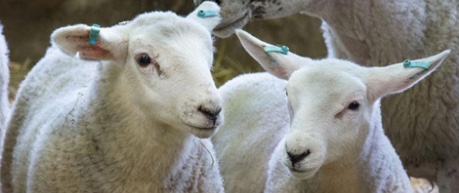Monday 26th August 2019, 10:00am
A new research approach could help progress towards therapies for a devastating childhood illness.

Studying sheep with a genetic condition that mirrors Batten Disease a rare nervous system disorder that causes dementia and early death in children could speed discoveries about the disease and possible new treatments.
New research shows that the progress of disease in sheep closely resembles its development in children, because of similarities in their size and physiology.
The approach should enable detailed studies of how the disease affects various functions in the body, and give reliable results regarding potential treatments.
Scientists at The Roslin Institute are studying a small flock of sheep with the same faulty gene that gives rise to this disease in humans. This gene mutation interferes with the health of lysosomes the cells waste disposal and recycling system and has a devastating impact upon children.
Sheep with a mutation in the gene known as CLN1 or PPT1 can be monitored and tested in similar ways to human patients, for example using MRI scans, to give valuable insights into the condition. They can also be used to test how therapies could be administered, and at what dose.
Symptoms of the condition in the large animal model should more closely mimic the experience of children with the illness, compared with conventional studies on mice or fruit flies. The Roslin team, who made the sheep using the genome editing technology CRISPR/Cas9, are working with Batten disease experts in the US, including their collaborators at Washington University in St Louis, to move this work forward.
There are several different genes which can cause Batten disease, and can present at various stages of childhood and typically lead to loss of vision, cognitive and movement dysfunction, seizures and early death. The CLN1 form of the disease develops in early childhood and can progress rapidly.
The affected sheep show many hallmarks of the disease in children, from signs of disease in cells through to changes in the size of the brain.
"Large animals such as sheep can help bridge the gap between understanding disease in small species such as flies or mice and how it affects humans. Our results show that these sheep are a very useful model for improving our knowledge of Batten disease and will prove crucial for assessing the effectiveness of future therapies."
Tom Wishart, Reader in Molecular Anatomy, The Roslin InstituteThe study, published in Scientific Reports, was funded by the Biotechnology and Biological Sciences Research Council (BBSRC), the Roslin Foundation; BioMarin Pharmaceutical, the RS MacDonald Trust, the Simons Initiative for the Developing Brain (SIDB) and the Euan MacDonald Centre for MND research.
This article has been prepared with materials provided by SRUC.
Source: The Roslin Institute